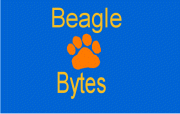National 4 Applications of Mathematics
SQA National 4 applications of Mathematics Nat 4 Apps Check ListThis course is spread across three units :
Managing Finance and Statistics (F&S) , Geometry & Measures (G&M) and Numeracy (Num)
An internal test is sat at the end of the course, with calculator and non-calculator papers.
BGE : S1,S2,S3 National 4 Maths National 5 Applications
Managing Finance and Statistics (F&S)
F&S 1.2 :Using appropriate mathematical processes and/or calculations to determine a solution.
F&S 1.3 :Explaining a solution in relation to the context.
F&S 2.1 : Interpreting a situation involving data and identifying an appropriate strategy.
F&S 2.2 :Representing data appropriately.
F&S 2.3 : Interpreting and/or comparing data to draw conclusions.
Finance
Key subskills:
Determining a financial position, given budget information.
Investigating factors affecting income.
Determining the best deal, given two pieces of information.
Converting between currencies.
Investigating the impact of interest rates for savings and borrowing in a basic situation.
Statistics
Key subskills:
Using statistics to investigate risk.
Using and presenting statistical information in diagrams.
Using diagrams to illustrate data.
Comparing data sets, using mean and range.
Constructing a frequency table.
Constructing a scattergraph.
Drawing a best fitting straight line on a scattergraph.
Geometry & Measures (G&M)
G&M 1.2 : Using appropriate mathematical processes and/or calculations to determine a solution.
G&M 1.3 : Justifying a solution in relation to the context.
G&M 2.1 :Analysing a situation involving geometry and identifying a valid strategy.
G&M 2.2 : Using appropriate mathematical processes and/or calculations to determine a solution.
G&M 2.3 : Justifying a solution in relation to the context.
Geometry
Key subskills:
Determining the gradient of a slope.
Investigating a situation involving perimeter.
Investigating a situation involving area.
Investigating a situation involving volume.
Solving a problem involving the use of Pythagoras’ theorem.
Using a scale factor on the dimensions of a shape.
Measures
Key subskills:
Solving a basic problem in time management.
Calculating a quantity based on a related measurement.
Constructing a scale drawing with a given scale.
Planning a basic navigation course.
Carrying out container packing, using a first-fit algorithm.
Investigating the need for tolerance in a measurement.
Numeracy (Num)
Num 1.1
: Selecting and using appropriate numerical notation and units.
Num 1.2: Selecting and carrying out calculations.
Num 1.3
: Reading measurements using a straightforward scale on an
instrument.
Num 1.4
: Interpreting the measurements and the results of calculations to make decisions.
Num 1.5
:Justifying decisions using the results of measurements or calculations.
Num 2.1: Extracting and interpretation data from at least two different straightforward graphical forms.
Num 2.2: Making and explaining decisions based on the interpretation of data.
Num 2.3: Making and explaining decisions based on probability.
Calculations and Rounding
Key subskills:
Add and subtract whole numbers including negative numbers.
Multiply whole numbers of any size, with up to four-digit whole numbers.
Divide whole numbers of any size, by a single digit whole number or by 10 or 100.
Round answers to the nearest significant figure or two decimal places .
Use appropriate checking methods, eg check sums and estimation.
Interpret results of measurements involving time, length, weight, volume and temperature.
Give reasons for decisions based on the results of measurements or calculations.
Fractions, Percentages, Ratio
Key subskills:
Find simple percentages and fractions of shapes and quantities.
Calculate percentage increase and decrease.
Convert equivalences between common fractions, decimal fractions and percentages.
Calculate rate: eg miles per hour or number of texts per month.
Calculate ratio and direct proportion.
Give reasons for decisions based on the results of measurements or calculations.
Distance, Speed and Time
Key subskills:
Calculate distance given speed and time.
Calculate time intervals using the 12- and 24-hour clock.
Measurements, Perimeter, Area and Volume
Key subskills:
Use measuring instruments with straightforward scales to measure length, weight, volume and temperature.
Read scales to the nearest marked, unnumbered division with a functional degree of accuracy.
Calculate volume (cube and cuboid), area (rectangle and square) and perimeter (shapes with straight lines).
Recognise the inter-relationship between units in the same family, eg mm→cm, cm→m, g→kg, and ml→l
Use vocabulary associated with measurement to make comparisons for length, weight, volume and temperature.
Give reasons for decisions based on the results of measurements or calculations.
Books
A selection of resources available at Amazon
As an Amazon Associate I earn from qualifying purchases.
